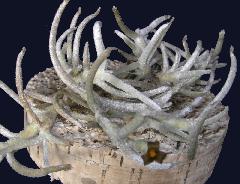
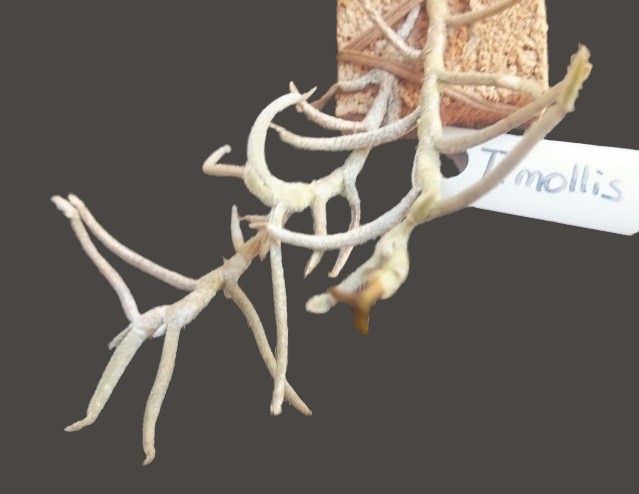
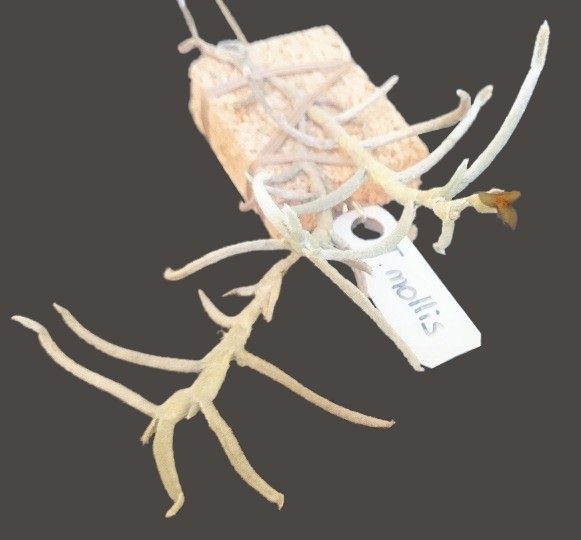
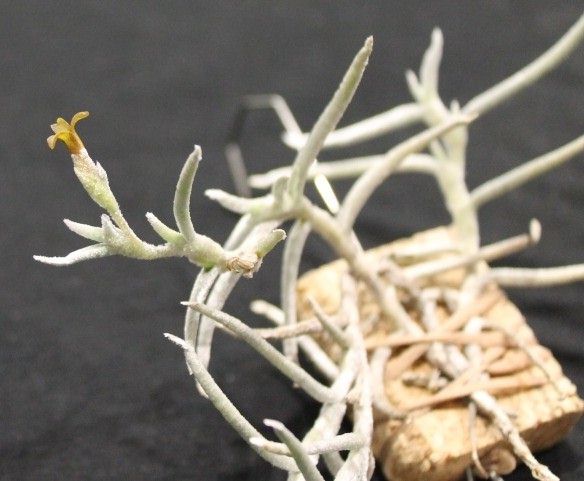
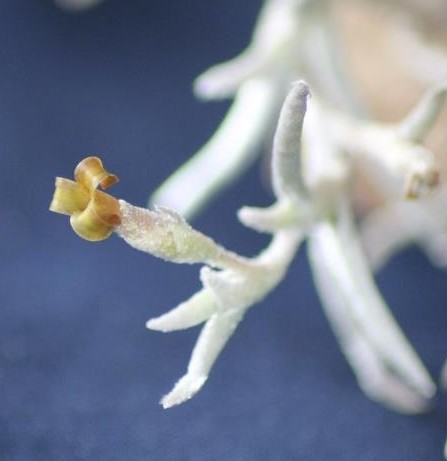
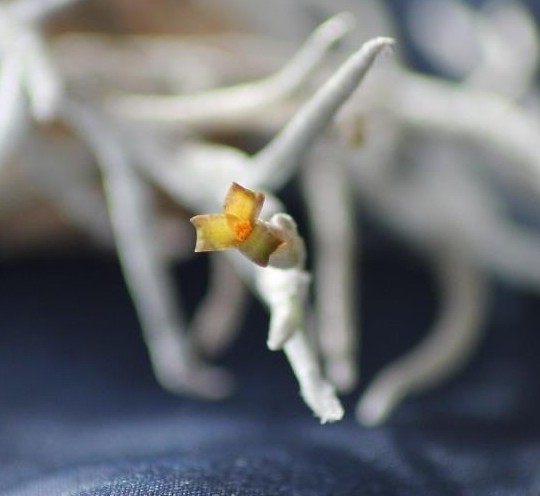
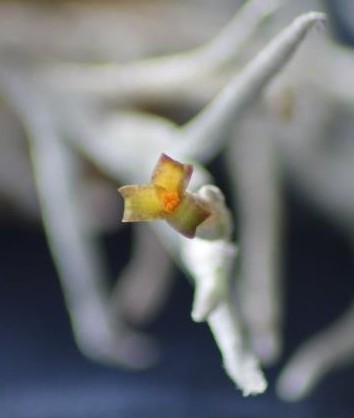
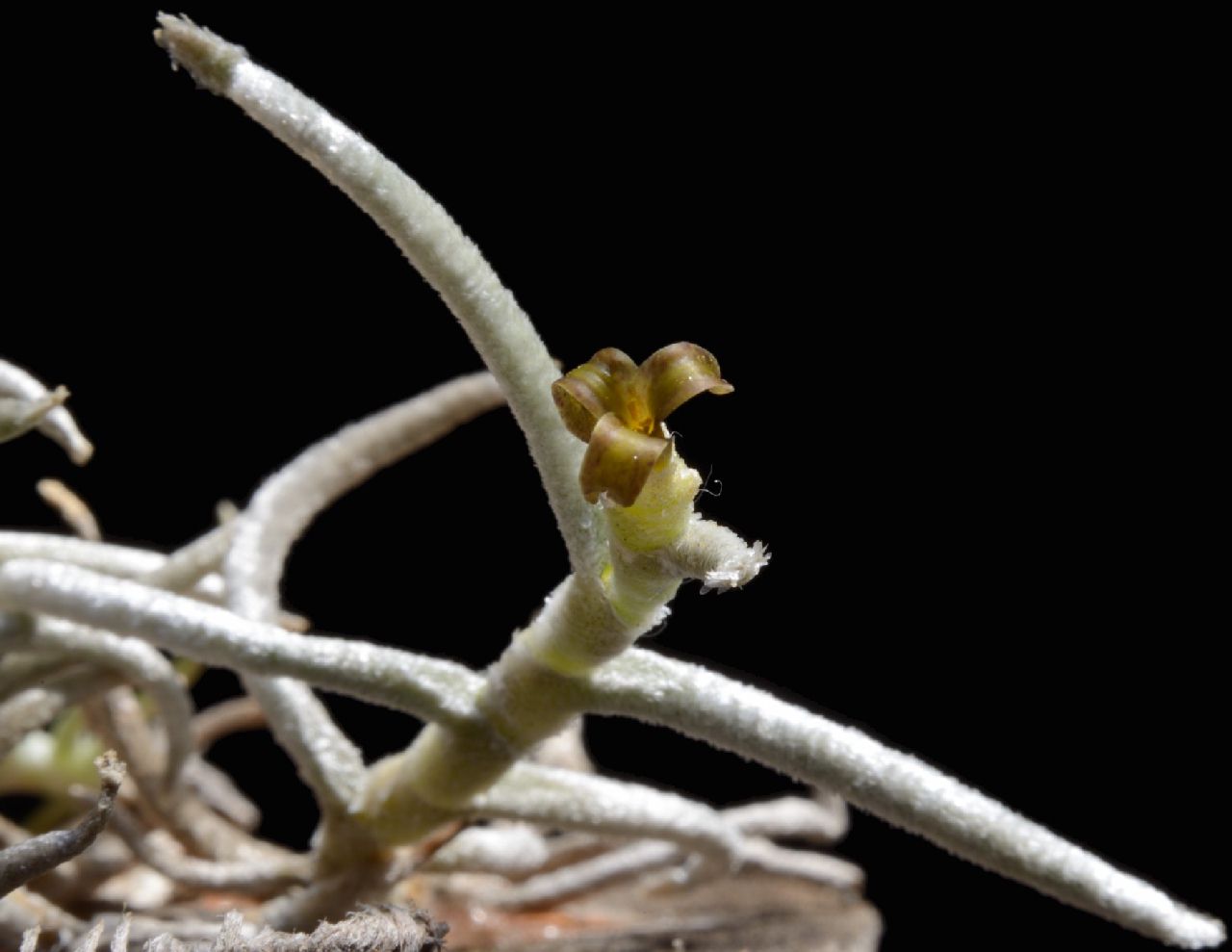
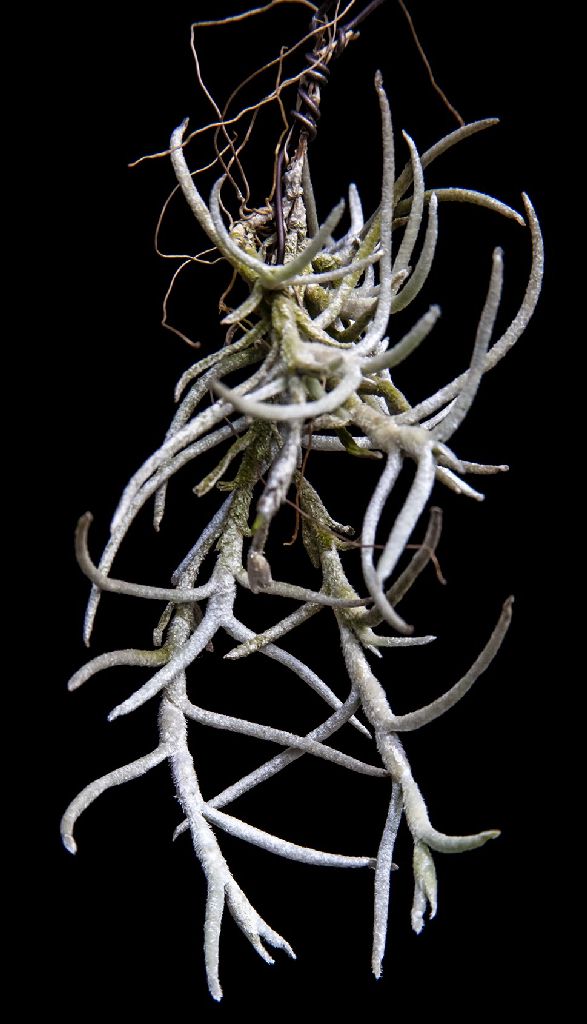






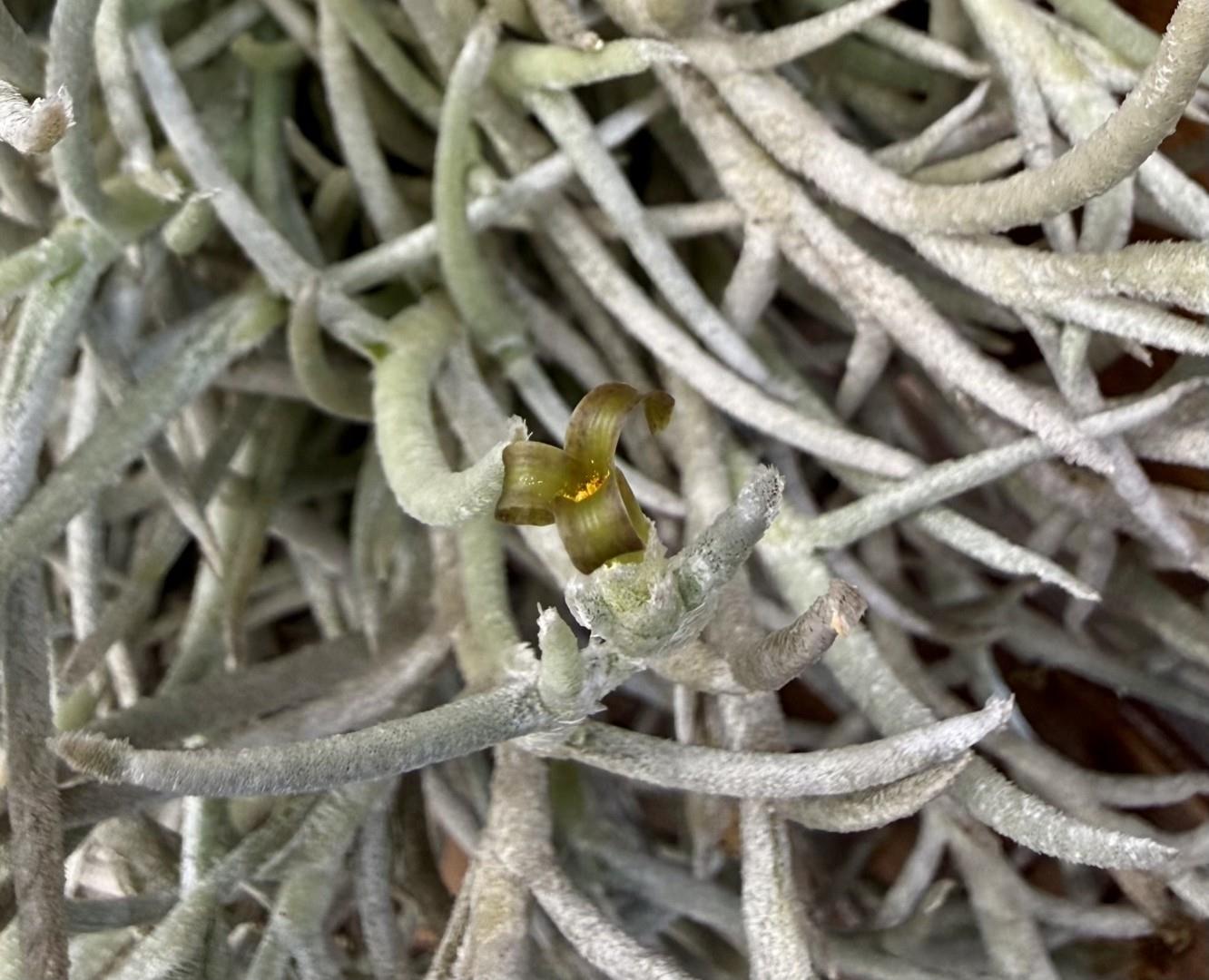
Differs from T. usneoides in
1. More robust habit.
2. Much branching.
3. Stem firm erect.
4. Internodes short.
5. Leaves round.
6. Sepals densely scaled.
7. Sepals nerved.
Tillandsia mollis grows on rocks with T. capillaris R. & P. forma virescens (R. & P.) L. B. SMITH, T. usneoides (L.) L., Abromeitiella spec., Cleistocactus straussii (HEESE) BACKEBG. and Aylostera spinosissima (BACKBG.)
The new species seems to be spread very locally, because, despite numerous trips to Argentina, Bolivia and Peru as well as at the type locality nowhere else has it been found and also not any herbarium specimens.
The closest species is T. usneoides (L.) L. Our species differs however, notably in the habit, the strong root-formation, the straight stocky stem, the much shorter internodes, the completely rounded leaves with more numerous, smaller vascular bundles, the many robust scales on the rounded sepals,(T. usneoides glabrous or almost glabrous and usually pointed) as well as the nerved sepal: with T. mollis the first side nerve merges with the middle nerve just short of the tip of the sepal, with T. usneoides the nerves are free and not joined to the mid nerve.
It is interesting that the larger number of vascular bundles in T. mollis, namely about 11 {numbering 3-5 (-6) in T. usneoides}. Moreover, they are also much smaller than with T. usneoides. The leaves of T. mollis are fully round in cross-section, and the upper side of the leaf is recognized by the somewhat eccentric situation of the central tissue reservoir. With T. usneoides the leaves – including the much thinner leafed forms – level off on the upper side of the leaf or sunken and not round.
T. mollis shows a rather high number of primitive features in comparison to T. usneoides: the short internodes (with T. usneoides much longer); the high number of the vascular bundles (with T. usneoides reduced to a few), the strongly scaled sepals (with T. usneoides glabrous or almost glabrous), and by virtue of root formation. Conspicuous are the Androeceum and Gynoeceum: the style is massively long, and the stamens almost reach the throat of the flower, the bottom end of the anther is clearly above the stigma. T. mollis in clear contrast to almost all remaining species of the subgenus Diaphoranthema, that almost always have strongly shortened styles and stamens, whose lower part of the anther ends directly near the stigma. The anthers often well within the petal tube and fully able to scatter pollen on its own stigma: enabling self pollination. T. mollis has only a poor chance at being autogamous. Instead, we could speak of the rare formation of capsules (these however are quite clearly normal and contain seeds). Perhaps we should compare a tribe, that is still dependent on outward heterogeneous pollination, with one, as in the above case, with a small population being self fertile with pollen from the same clone and only rarely producing capsules. On the other hand, it could be a natural phenomenon that an ancient tribe has already reduced its fertility, growing in a very localized habitat. In this case, we have to treat T. mollis as a relict endemic. Undoubtedly however, it is a very interesting species, whose value will be in assisting further research into the subgenus Diaphoranthema.
Living-plants of T. mollis are in the collections E. Haugg, H. Hromadnik( sub nr. 9088) and W. Till ( sub WT 62)